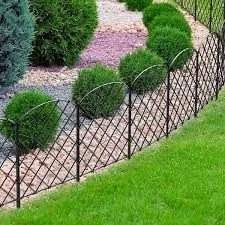The Versatility and Sustainability of Gabions
Gabions, originating from the Italian word gabbione, which means big cage, are versatile structures made from wire mesh that are filled with rock, concrete, or other materials. Initially used for military fortifications, gabions have evolved into a popular choice for modern engineering and landscaping projects due to their durability, cost-effectiveness, and environmental benefits.
The Versatility and Sustainability of Gabions
In addition to their role in erosion control, gabions are also used in the construction of retaining walls. These walls help manage the gravitational forces acting on soil and prevent landslides or collapse. Unlike traditional retaining walls made of concrete, gabion walls are more adaptable to varying terrain and can blend seamlessly with the environment. This merging into the landscape is particularly appealing for eco-conscious builders and developers, as it reduces the visual impact on the natural surroundings.
gabion1

The aesthetic appeal of gabions has also gained traction in landscaping and architectural design. Landscape architects often utilize them to create unique and visually striking features in public spaces, parks, and gardens. Filled with colorful stones or other materials, gabion walls and benches can serve as functional art pieces that enhance the beauty of an area. Their rugged yet elegant appearance also contributes to a natural and earthy ambiance, making them a favored choice in contemporary design.
Moreover, gabions are recognized for their sustainability. As they are often made from natural stone, they can be sourced locally, reducing transportation costs and environmental impact. The wire mesh used is commonly made from recycled materials, further contributing to their eco-friendliness. Gabions also promote biodiversity by allowing vegetation to grow within them, creating habitats for various species. The gaps in the mesh enable plants to root and flourish, which not only enhances the structure's aesthetics but also improves the surrounding ecosystem.
The installation of gabions is relatively straightforward, making them an attractive option for both large-scale projects and DIY enthusiasts. They can be easily assembled on-site, filled with locally available materials, and adapted to fit specific site requirements. This simplicity not only saves time and labor costs but also encourages sustainable practices as builders are less likely to depend on heavy machinery or extensive resources.
In conclusion, gabions represent a remarkable blend of functionality, aesthetic appeal, and sustainability. Their applications in civil engineering, landscaping, and environmental conservation demonstrate their versatility and adaptability. As society increasingly seeks solutions to manage natural challenges while promoting ecological harmony, gabions will undoubtedly continue to gain prominence in various fields. Whether used for erosion control, as architectural features, or as part of eco-friendly practices, gabions stand out as a testament to innovative design that respects and enhances the natural world.
















